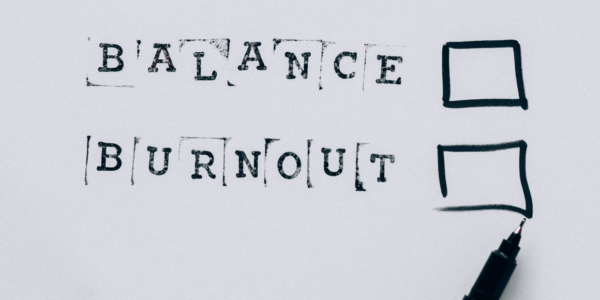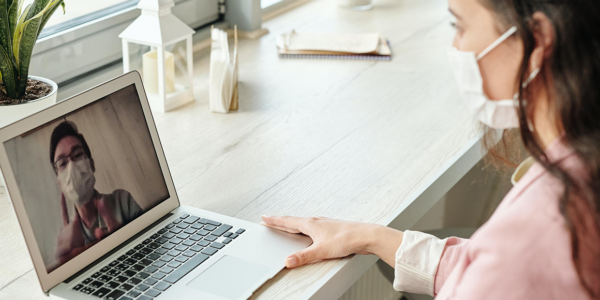As health care continues to evolve, so does the way that patients interact with their providers. Gone are the days of patients calling to schedule appointments only to have to wait on hold. Instead, patients can receive their care via a variety of channels, including through text or secure web chat.
In most cases, asynchronous messaging is objectively more convenient than synchronous communication. While synchronous communication, like phone calls, requires real time conversations, asynchronous communication, like SMS texting, allows for both parties to send messages when it is convenient for them.
The convenience of asynchronous messaging is especially impactful in the healthcare sphere, both for patient-provider and provider-provider communication.
The value of asynchronous communication
In the past, healthcare was heavily reliant on synchronous communication to relay information. Requiring all participants involved in a conversation to be in communication with each other at the same time was both difficult and time consuming. It meant that care providers had little control over their patient and colleague communication workflow, and patients had to drop everything to speak with their provider.
Asynchronous communication is a quick and easy way to deliver care to patients regarding their administrative needs and lower-acuity conditions. It allows for faster, more efficient communication and can reduce the time it takes to respond to an urgent request. Additionally, it provides an opportunity for scalability that otherwise is difficult when relying solely on synchronous communication methods.
Asynchronous messaging has been proven to be beneficial in healthcare settings, where it can help improve patient care and organizational efficiency. It is also an excellent tool to pair with other telehealth options like video visits or remote patient monitoring (RPM). And best of all, it works for a variety of specialties.
Planning out your engagement
Asynchronous communication allows for engagement when it is convenient for the user to triage the message. You could even decide to schedule out time to respond to patient messages throughout the day.
By utilizing asynchronous messaging technologies in this way, you can ensure that all patients have easy access to their you and your colleagues while also providing quality service to patients in the office.
Improve the patient experience
A recent study found that, in a hospital setting, the use of asynchronous communication was proven to reduce medical errors by 19 percent. They also improved the efficiency of care coordination and the appropriate escalation of care. Asynchronous tools don’t fall prey to communication bottlenecks that are associated with poor patient outcomes in the same was as synchronous methods. This means better outcomes and improved customer satisfaction.
And as you could imagine, implementing a text-based, no app necessary, communication option makes the patient experience even easier.
Asynchronous messaging can also be a great way to keep patients updated on their treatment. When patients know that they’ll be receiving updates in a timely manner, it reduces the anxiety and stress that can come with medical appointments.
Increase team productivity
That same study also identified that the use of asynchronous communication improved the healthcare experience for patients and providers alike. For providers, these tools reduced the amount of time to complete a patient-related task by 20 minutes, or 58 percent, when compared to workflows reliant on synchronous communication. This decrease in time required for tasks means that many providers experienced less burnout and job dissatisfaction.
For providers, these tools reduced the amount of time to complete a patient-related task by 20 minutes, or 58 percent, when compared to workflows reliant on synchronous communication.
By using asynchronous chat tools, team members can remain in communication without devoting time to only communicating with each other, and increasing productivity. Sharing the load of patient communication responsibilities also makes room for better patient care and a better provider experience.
Documentation at your fingertips
Asynchronous messaging tools are further improved by the fact that they often come with a chat history. This allows the responder to see what the patient has discussed with providers in the past, and gives some context to the present conversation.
How to implement asynchronous communication
Now that we’ve discussed the benefits of asynchronous communication at length, it’s time to look at how to successfully install these tools at your practice. Asynchronous communication boundaries can be a tricky thing for patients to understand. Without clear expectations, the experience can be frustrating for you and your patients. Here are a few tips on how to set patient expectations for asynchronous communication to maintain patient satisfaction:
Encourage texting
You’ll want to start by simply getting patients used to texting. We recommend starting by sending a personalized message to all your patients at once, utilizing OhMD’s Broadcast feature. You can use your Broadcast message to alert your patients to the new ability to text your practice. It doesn’t have to be complicated, in fact, the simpler the better.
Here’s an example of how you could spread the word:
“This is {Practice Name} reaching out to let you know that we now offer texting as a service. For any inquiries, appointment scheduling needs, medication refills, or questions, please reach out to us via text at {Practice Number}.”
Setting patient expectations
To start, you’ll want to make sure you set patient expectations appropriately. This may include setting an away message for when the office is closed. Something along the lines of:
“You have reached {Practice Name}. We are currently closed, but we will get back to you when we reopen. Our regular business hours are {Hours}. If this is an emergency, please call 911.”
This type of notice assures patients that their message has been received and will be triaged as soon as the office reopens.
By keeping patients up-to-date on the status of their messages, you can help reduce their anxiety and fears, and ensure a smooth and successful healthcare experience.
Consider the tone of your messages— with patients and colleagues
It is also important to be sure to practice empathy and compassion when using asynchronous messaging. This goes for both internal colleague communication and patient conversations. Keeping these qualities in mind when using asynchronous messaging tools is vital to the success of implementing these new tools.
So what kind of tools could fall into this asynchronous category, and how do you use them?
Great question!
To begin with, two-way HIPAA compliant texting is a fantastic way to communicate with patients regarding more standard requests and concerns. It allows both staff and patients to reply to messages on their own terms. And on the patient end, the experience is no different than texting friends or family members, right from their mobile device.
Automation
To make conversations even easier, automation can give your practice a major boost.
Tools like OhMD Autopilot and Broadcast allow you to automate a portion of both your inbound and outbound messaging, making asynchronous communication even easier.
Autopilot takes common patient messages, like medication refills and appointment requests, and automatically gathers the information from patients to process the request. Meanwhile, Broadcast makes it possible to send individualized messages to patients on a large scale. In combination, Autopilot and Broadcast make managing common inbound and outbound messages much more streamlined allowing care providers to focus on more nuanced inquiries and conversations.
Colleague and team messaging
When it comes to internal communication, HIPAA-compliant colleague chats are a game changer. They allow for care coordination and team-building. Using colleague chats, you’re able to let your fellow providers know that you’ve roomed a patient, gathered their intake information, or run their requested labs. This allows staff to stay in touch with each other, while knowing that their message will be handled when it’s convenient for the recipient.
The appropriate colleagues are then kept up-to-date on relevant information and can collaborate with each other to help provide the best care possible.
Connecting asynchronous and synchronous communication
We’ve established that we’re big proponents of asynchronous communication. With that being said, we know there’s a time and a place for synchronous communication. Even more, we took that into account when building features, so that transition is simple!
Voice calling
With OhMD’s Patient Calling tool, you’re able to move from a text conversation to a phone call seamlessly. Without even picking up a phone, you can call a patient within OhMD, right from your desktop.
This means that you can take a text conversation which requires a bit more in-depth discussion and move right to a call. You can even let patients know you’re going to call them, or schedule a phone call in advance via text.
The best part is that the start and end times of the call, as well as the duration, are recorded in OhMD as system messages right in the patient’s chat thread. This makes charting and billing easy, as call information is housed right alongside text communication. It also leaves a record of the conversation for other providers to see, so the whole team knows the patient’s needs have been met.
When to use synchronous versus asynchronous communication
Common patient requests are perfect for asynchronous communication, as are less pressing concerns. However, emergency situations are undoubtedly better suited for an escalation of care. As a best practice, we recommend deciding on a point at which asynchronous communication no longer suffices. We suggest deciding upon this threshold as an organization and creating protocols for the potential that a patient messages in regarding an emergency situation.
Asynchronous messaging, both with patients and colleagues, is clearly beneficial for a variety of reasons. It will not only improve the overall speed and efficiency of patient care but also open up a new era in how you deliver healthcare. Save time and effectively eliminate bottlenecks with healthcare-specific tools customized for your practice needs.

Asynchronous communication is one text away
See why over 50,000 clinicians choose OhMD for patient and colleague communication




